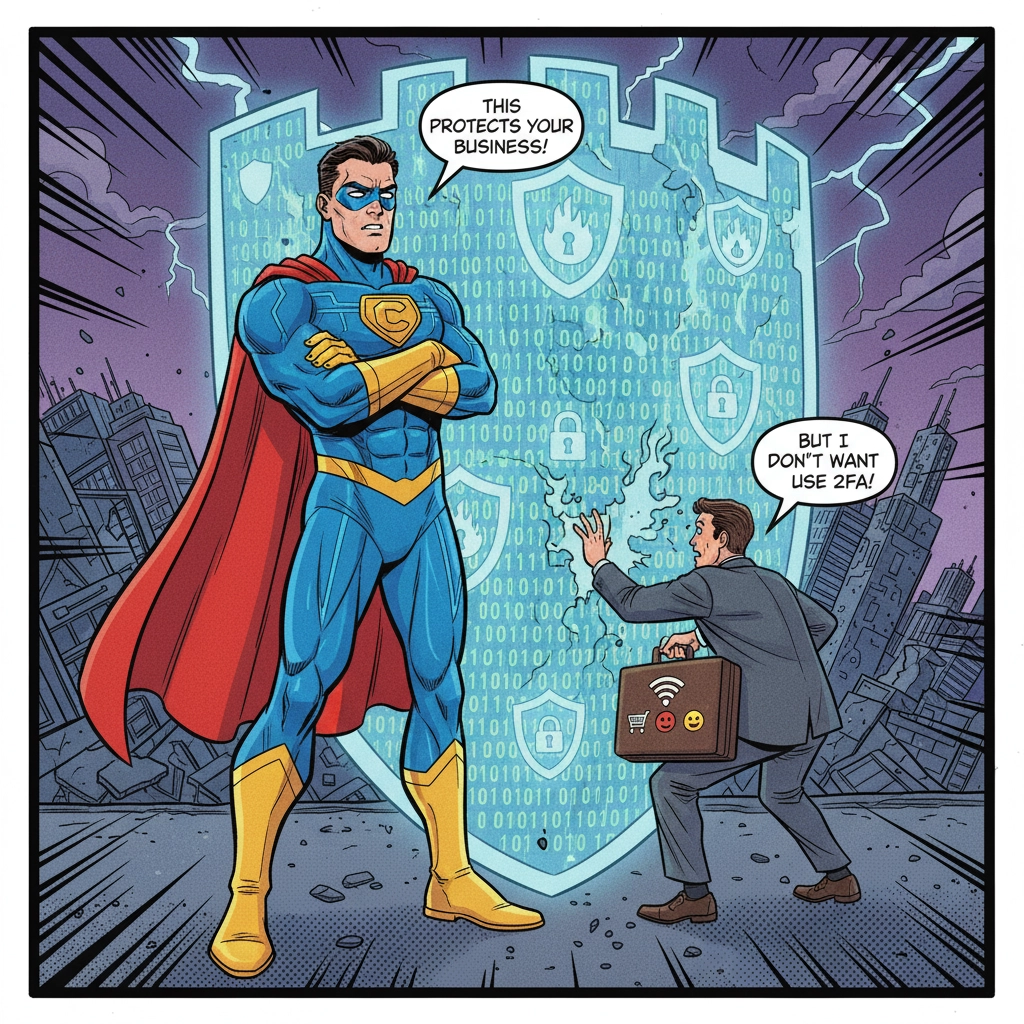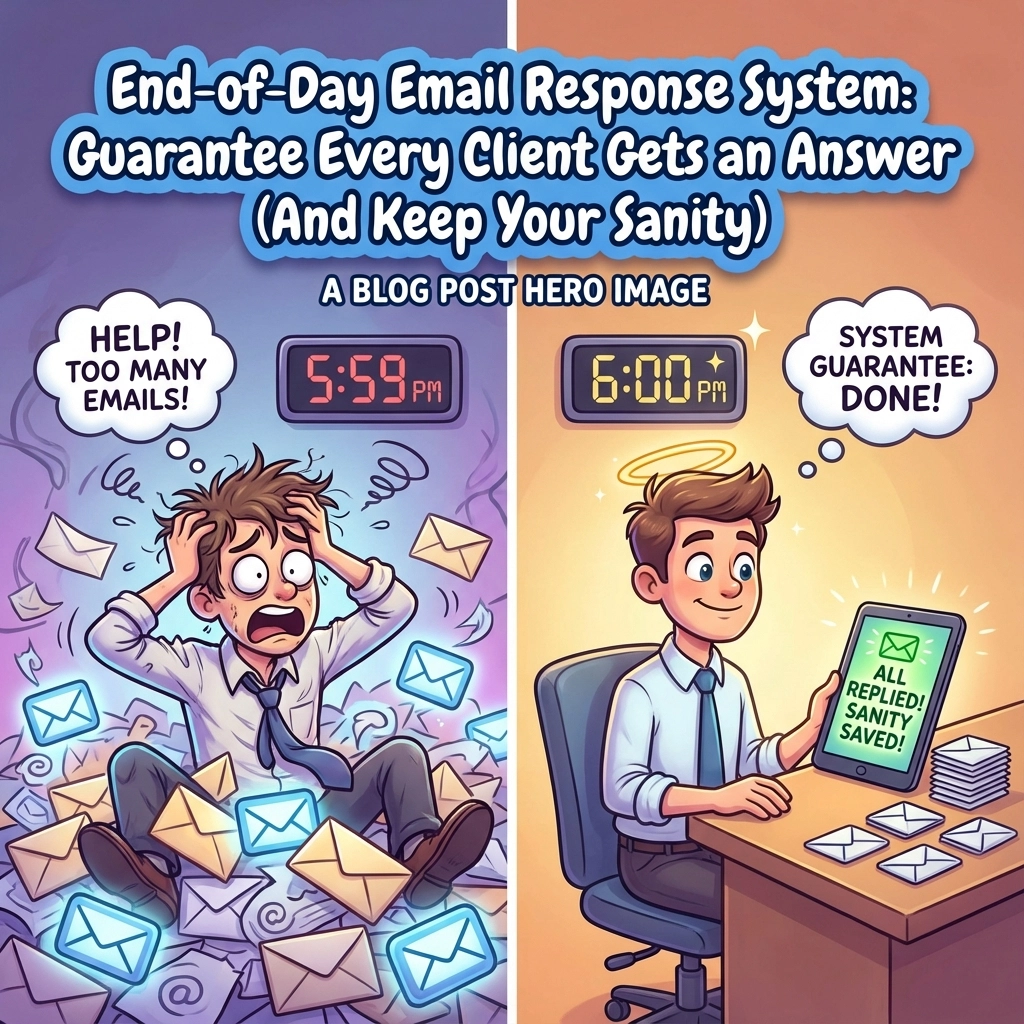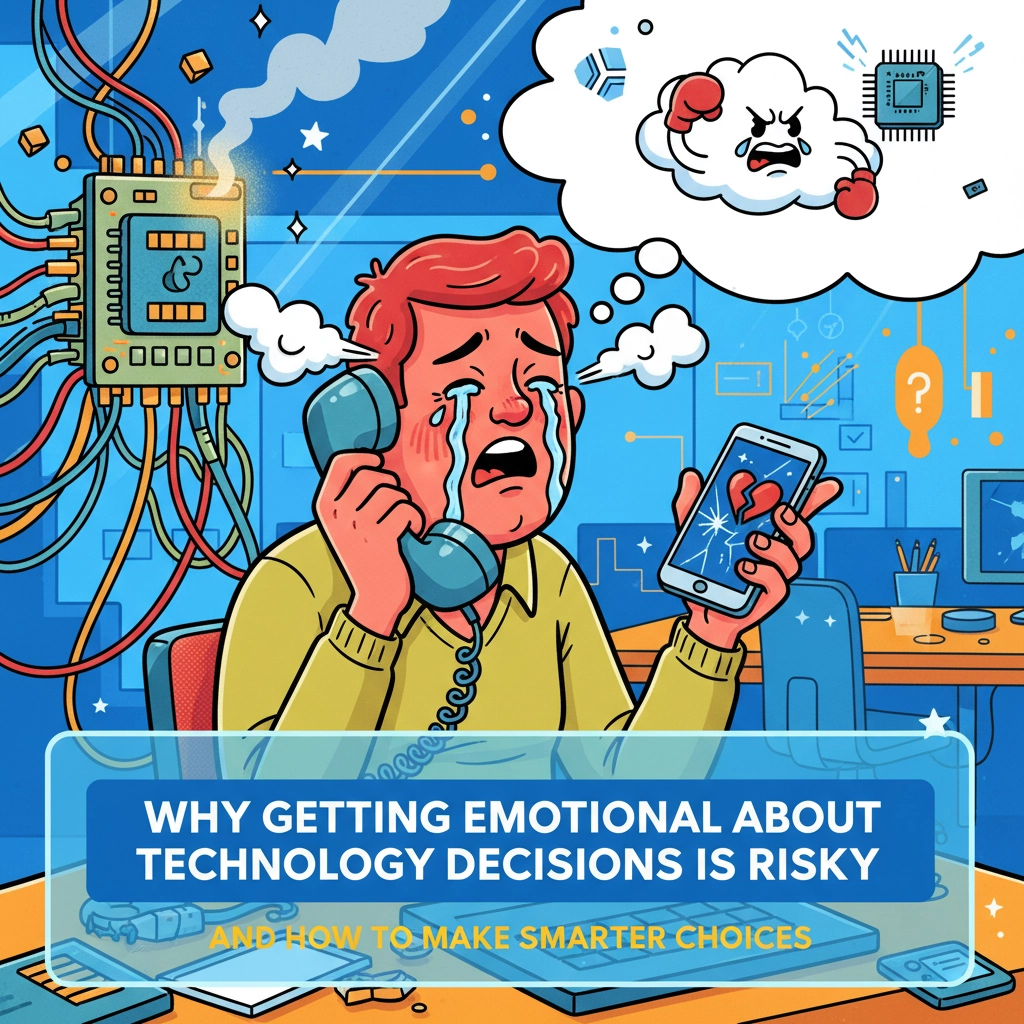Picture this: Your computer is acting weird, so you call tech support expecting instant magic — a five-minute miracle fix. When they start asking you to restart your computer or check cables, you get frustrated. “Just remote in and fix it!” you think. Meanwhile, the tech support person on the other end isn’t wasting your time — they’re following a process that actually works.
Sound familiar? Welcome to the daily reality of tech support professionals everywhere.
The truth is, unrealistic expectations don’t just make customers cranky — they make it nearly impossible for tech support to do their jobs well. And the worst part? Most people have no idea what’s really happening behind the scenes when they call for help.
The Classic Expectation Disasters We See Every Day
Let’s start with the obvious ones that drive every IT professional up the wall.
“Why Haven’t You Called Me?”
You submit a ticket via email (exactly as you’re supposed to), and the tech responds within an hour with questions or next steps. Radio silence. They follow up. Still nothing. Three days later, you’re on the phone furious that nobody has “reached out” to you.
The reality? They did reach out. Multiple times. Via the same email system you used to contact them. But somewhere in your mind, “real” support means a phone call, even though email creates a paper trail, allows you to respond on your schedule, and doesn’t interrupt your day.
Phone calls aren’t always realistic for every issue. A tech might be troubleshooting five different problems simultaneously, and stopping to call each person means nothing gets resolved. Email and ticketing systems exist for a reason: they’re scalable, trackable, and let both parties work efficiently.
“Schedule a Call” (That Never Happens)
Then there’s this classic: “Can we schedule a time to troubleshoot this together?” the tech asks, knowing your issue requires real-time collaboration. You agree. They send a scheduling link or specific time options. Then… nothing. No calendar invite accepted, no response.
Five days later, you email back complaining about the same problem, as if the tech ghosted you instead of the other way around.
If you need help but won’t commit to the process that actually provides help, the problem isn’t with tech support.
Email Isn’t a Suggestion
Most professional IT support runs on ticketing systems fed by email for good reasons. It creates documentation, tracks resolution time, and ensures nothing falls through the cracks. When you bypass the system with random texts, calls to personal numbers, or messages on three different platforms, you’re not being efficient – you’re creating chaos.
The tech now has to manually document all those conversations, piece together what you actually need, and hope they didn’t miss something in your scattered communication trail. All while you’re wondering why resolution is taking so long.
“Just Fix It Instantly”
This is the big one. People expect tech problems to be solved like they’re ordering fast food: quick, easy, and exactly how they want it. They don’t realize that proper troubleshooting is like being a detective. You can’t just guess at the solution — you need to gather evidence, test theories, and rule out possibilities.
When your internet is slow, there could be dozens of reasons: your router, your ISP, malware, too many devices connected, or even something as simple as where you placed your router. A good tech support person needs time to narrow this down, but customers often get impatient after the first few questions.

“Everything Is Connected to Everything”
Here’s a fun one: people love to connect unrelated problems. “Ever since you fixed my email, my printer stopped working!” Never mind that the email issue was completely software-based and the printer ran out of toner — clearly, it’s all connected in some mysterious tech conspiracy.
Tech professionals know that correlation doesn’t equal causation, but try explaining that updating antivirus didn’t somehow break the coffee maker’s Wi-Fi.
“I Don’t Have Time for Your Process”
This might be the most frustrating. A customer calls with a security issue, but when you ask them to change their passwords or install updates, suddenly they’re too busy. They want the problem fixed without doing any of the work that actually fixes the problem.
It’s like calling a doctor but refusing to take the medicine they prescribe — then getting mad when you don’t feel better.
“I’m So Frustrated Right Now!”
This one’s tricky because the frustration is real, but here’s what often happens: someone reaches out in a panic with an emotionally charged message about how nothing works and everything is broken. You respond within minutes, ready to help. Then… crickets. They’re suddenly unavailable for the next three days.
When they finally resurface, they’re frustrated that the problem still isn’t fixed, even though you’ve been waiting on them to provide information or test solutions.
This creates a vicious cycle. The user feels helpless and overwhelmed, which makes them avoid dealing with the problem. The avoidance makes the problem feel bigger and scarier. Then when they finally engage, they’re so wound up that they can’t follow the troubleshooting steps clearly.
Tech support isn’t trying to be difficult when they ask you to be available during troubleshooting. Complex problems require back-and-forth. If you’re too frustrated to engage with the process, that’s okay — but take a break first. Come back when you can focus, and you’ll likely find the whole thing less painful than you imagined.
What’s Really Happening Behind the Scenes
While customers are getting frustrated with what seems like “unnecessary” steps, here’s what tech support is actually dealing with:
The Troubleshooting Dance
When a tech asks you to restart your computer, they’re not being lazy. They’re following a logical troubleshooting process that starts with the most common solutions first. It’s like a flowchart: if restarting doesn’t work, move to step two. If that doesn’t work, move to step three.
Skipping steps might seem faster, but it often leads to missing the actual problem entirely. Then you’re back to square one — except now you’ve wasted even more time.

Security Theater vs. Real Security
In cybersecurity, this expectation gap is especially dangerous. Customers want to feel secure without doing anything that feels inconvenient. They want strong passwords but don’t want to use a password manager. They want their data protected but don’t want to enable two-factor authentication.
Meanwhile, security professionals know that real protection requires layers of defense and user behavior changes. But explaining why you need to update your software again feels like nagging — even though it’s literally what keeps your business safe.
Why Best Practices Look Like Overkill (But Aren’t)
Here’s the thing about best practices in IT and cybersecurity: they exist because of thousands of failures that came before them. Every “unnecessary” step in a troubleshooting process exists because someone, somewhere, skipped it and ended up with a bigger problem.
Documentation That Seems Excessive
When a tech asks you to describe exactly what you were doing when the problem happened, they’re not being nosy. They’re gathering data that could be crucial to solving not just your immediate problem, but preventing it from happening again.
But to customers, it feels like paperwork for the sake of paperwork.
Testing That Feels Redundant
After fixing a problem, good tech support will ask you to test multiple scenarios to make sure everything is working. This isn’t because they don’t trust their own work — it’s because they’ve seen too many “quick fixes” that work temporarily but fail under different conditions.
Follow-Up That Seems Pushy
When tech support follows up a few days later to make sure everything is still working, they’re not trying to sell you something. They’re trying to catch problems before they become emergencies. But it often comes across as annoying check-ins.

The Real Cost of Mismatched Expectations
When expectations don’t align with reality, everyone loses. But here’s the uncomfortable truth: if you keep switching providers and running into the same “terrible support” everywhere you go, you might want to ask what the common denominator could be.
When “Bad Service” Follows You Everywhere
You know those people who constantly complain about every tech provider they’ve had? “My last IT company was useless. The one before that didn’t know what they were doing. This new one is just as bad.” At some point, you have to wonder — is every tech company incompetent, or is someone refusing to follow the troubleshooting process?
It’s like serial dating where every relationship ends the same way. Eventually, you have to look in the mirror.
You Don’t Know How to Do This Job (And That’s Fine)
When a tech follows proper procedures and you blow them off because you “know” they’re unnecessary, you’re not being savvy — you’re actively sabotaging your own support. You called for help, then rejected the help because it didn’t match your preconceived notion of what the solution should be.
If you knew how to fix it properly, you wouldn’t need to call support in the first place. Yet somehow, customers feel entitled to dictate the troubleshooting process to the person who actually does this for a living.
The Band-Aid You Demanded
That quick fix you insisted on? The one where you refused to do the “extra” steps the tech recommended? Congratulations — you’ve now got a recurring problem that’s going to fail at the worst possible time. And you’ll blame the tech for not fixing it right, even though they literally told you this would happen.
Bridging the Gap: What Changes When You Actually Listen
The most effective tech support relationships have something in common: customers who trust the process and professionals who explain it clearly.
They Explain the “Why” (And You Actually Hear It)
When a tech explains that restarting clears temporary files and resets network connections, they’re not making small talk. They’re helping you understand why this step matters. If you immediately dismiss it because it sounds too simple, you’re the problem.
They Give Realistic Timelines (That You Actually Accept)
Some problems take time to diagnose properly. The best techs will tell you this upfront rather than promise magic. If you can’t accept that reality and start shopping for someone who’ll tell you what you want to hear, you’re setting yourself up for disappointment.
They Focus on Prevention (If You’ll Let Them)
Quality support prevents future problems through monitoring and proactive maintenance. But this only works if you’re willing to invest in doing things right rather than constantly looking for the cheapest option that promises instant results.
When both sides understand their roles — techs doing their job properly and customers trusting the expertise they’re paying for — the whole process works better. But it requires users to recognize when their own behavior is creating the problems they keep complaining about.
Collaboration Doesn’t Mean Takeover
Good tech support is a partnership, but partnerships require respecting boundaries. You bring the knowledge of your business and how you use your systems. They bring the technical expertise to keep those systems running securely and efficiently.
The problems start when either side tries to do the other’s job. When users start dictating troubleshooting methods or refusing best practices because “they know better,” it breaks down the entire support relationship.

The Bottom Line
Unrealistic expectations aren’t just annoying — they’re actively harmful to getting quality tech support. When customers expect instant magic and professionals are trying to deliver sustainable solutions, nobody wins.
The solution isn’t lowering standards or cutting corners. It’s better communication about what quality support actually looks like and why it’s worth doing right the first time.
Next time you’re dealing with tech support, remember: they’re not trying to make your life difficult — they’re trying to fix it for good. That takes a few extra steps, but it beats dealing with the same issue again next week.
Share this:
- Click to share on Facebook (Opens in new window) Facebook
- Click to share on Tumblr (Opens in new window) Tumblr
- Click to share on X (Opens in new window) X
- Click to share on Pocket (Opens in new window) Pocket
- Click to share on Pinterest (Opens in new window) Pinterest
- Click to share on LinkedIn (Opens in new window) LinkedIn




